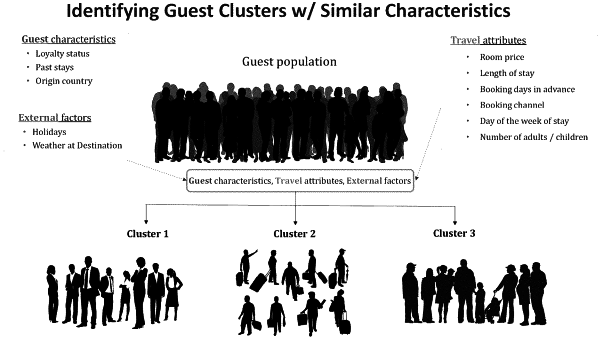| CPC G06Q 10/067 (2013.01) [G06F 18/2321 (2023.01); G06F 18/2415 (2023.01); G06N 20/00 (2019.01); G06Q 10/02 (2013.01); G06Q 30/0202 (2013.01)] | 20 Claims |

|
1. A method of generating a demand model for a potential hotel customer of a hotel room, the method comprising:
based on features of the potential hotel customer, forming a plurality of clusters using a cluster model, each cluster comprising a corresponding weight and cluster probabilities, each cluster corresponding to a different hotel customer persona;
generating an initial estimated mixture of multinomial logit (MNL) models, each comprising a choice model and corresponding to each of the plurality of clusters, each MNL model based on parameters related to hotel room offerings and configured to predict a choice probability of room categories and rate code combinations for the potential hotel customer, the mixture of MNL models comprising a weighted likelihood function based on the features and the weights;
forming an Expectation Maximation functionality comprising a weighted likelihood function comprising a combination of the cluster model and the choice model, the weighted likelihood function comprising an objective function comprising a plurality of model parameters;
estimating the model parameters by finding a maximizer of the Expectation Maximation functionality comprising a plurality of iterations, the estimating comprising dynamically updating the cluster probabilities at each iteration evaluated at a value of the model parameters at a previous iteration and estimating an updated mixture of MNL models based on the updated cluster probabilities at each iteration; and
based on the value of the model parameters, generating the demand model.
|